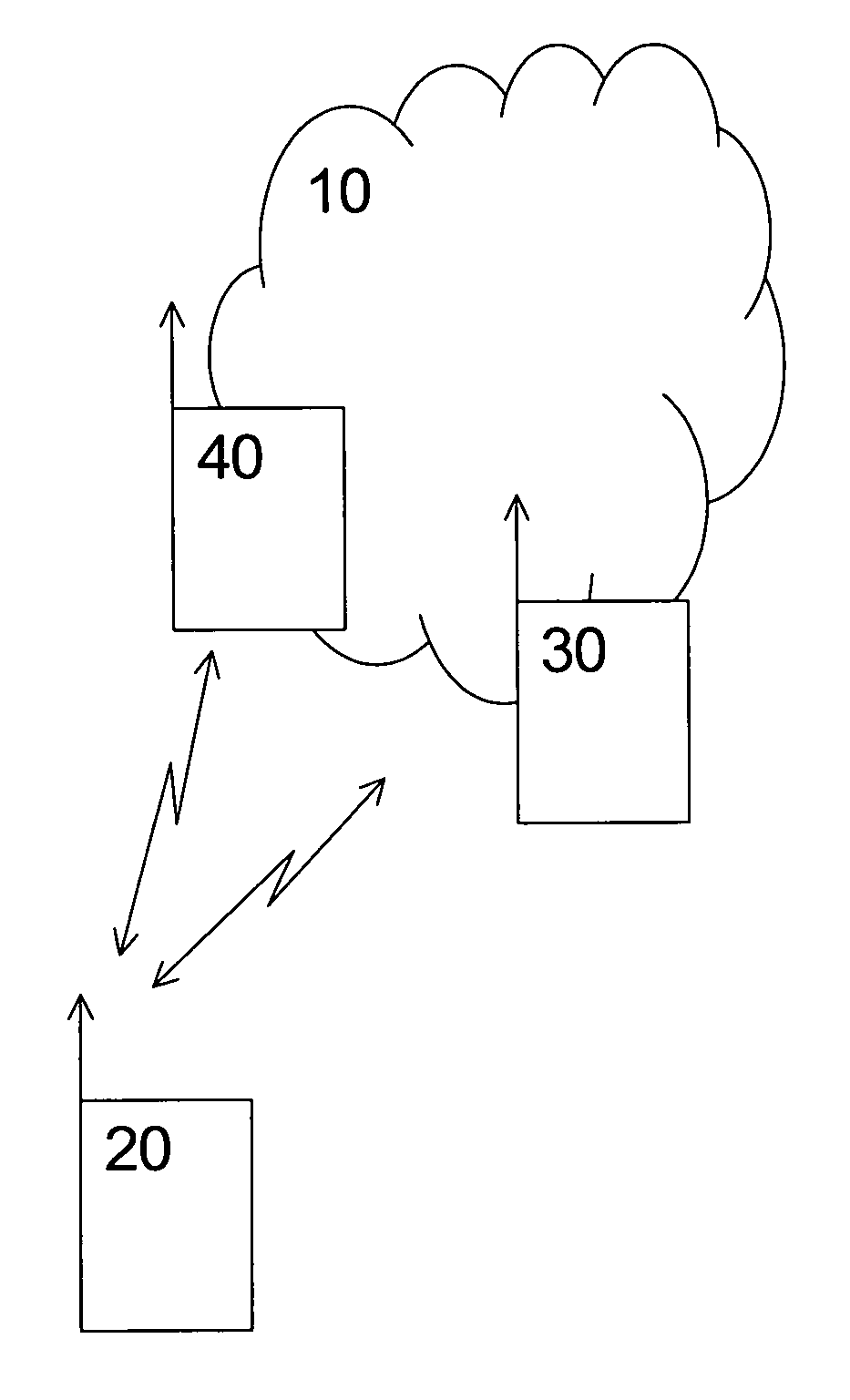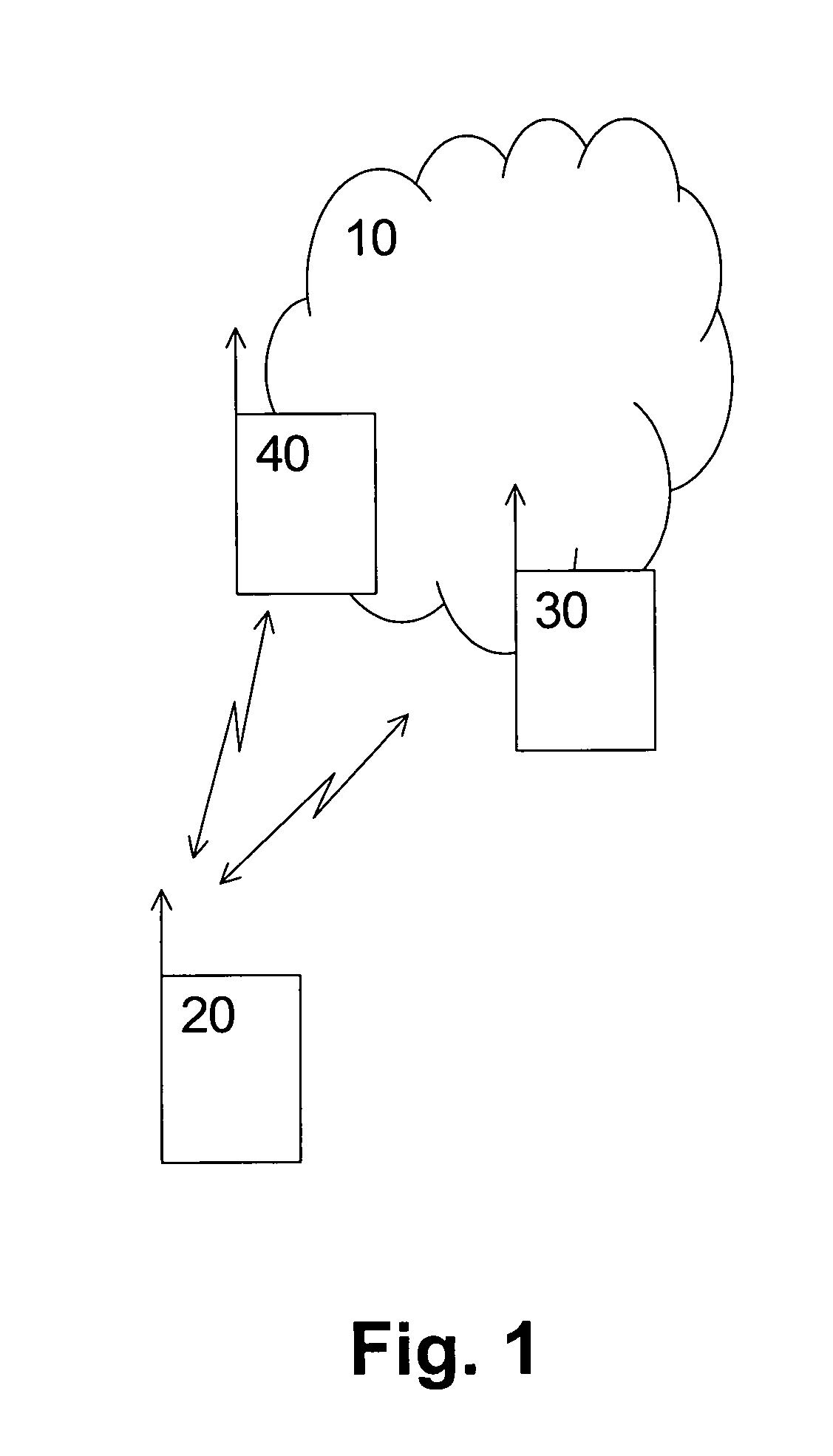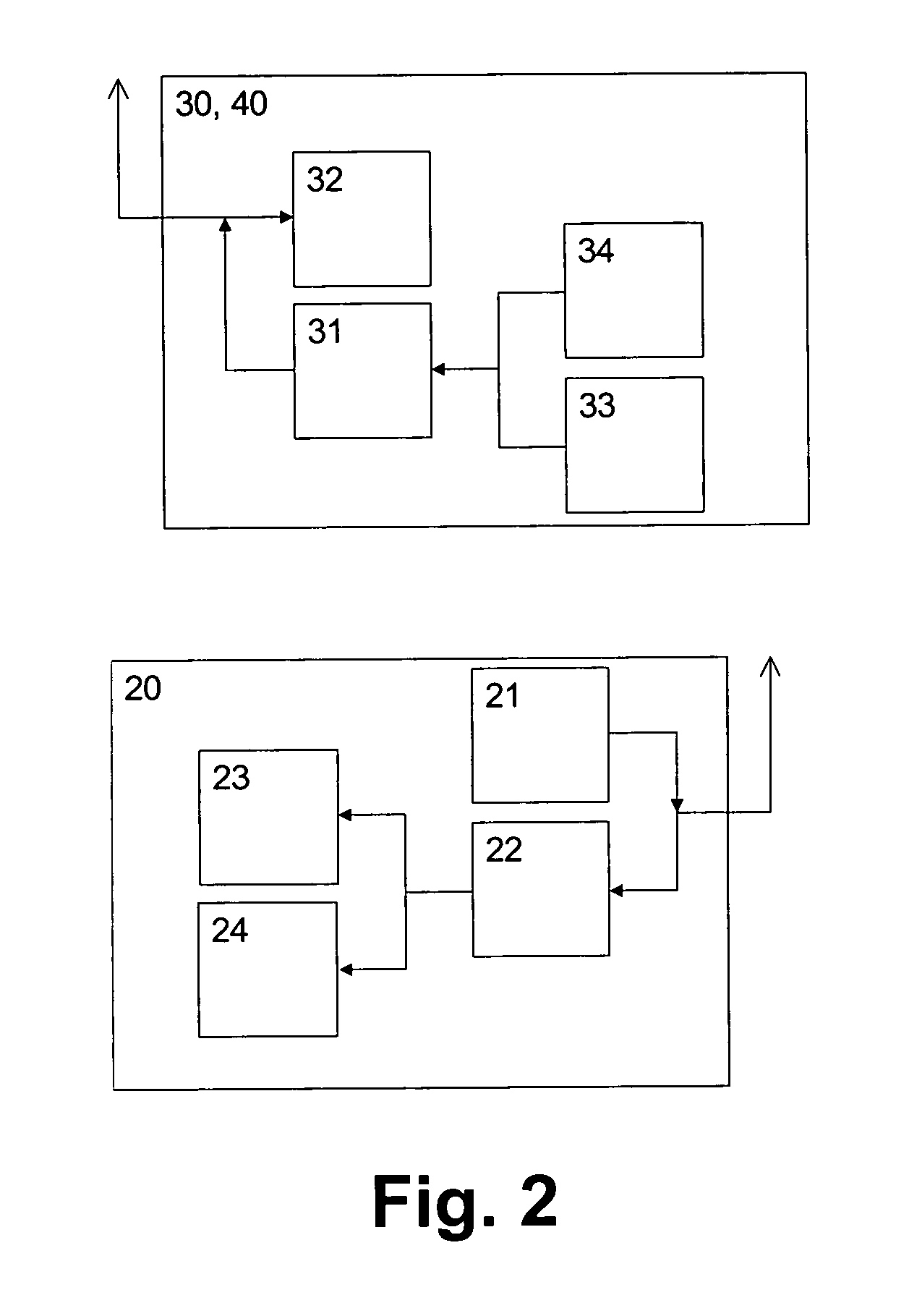Re-Activation of a Base Station in Standby Mode
- Summary
- Abstract
- Description
- Claims
- Application Information
AI Technical Summary
Benefits of technology
Problems solved by technology
Method used
Image
Examples
first embodiment
[0056] the system information does not contain capability information. Thus, the terminal device 20 does not have knowledge of base stations that might be disabled. In this case, the terminal device 20 can presume that there might be base stations in the neighborhood, which can be waked up, activated or enabled. Hence, it may perform a different idle mode procedure as described below, if a signal quality of a broadcast channel of a wireless network cell is insufficient, i.e. the terminal device 20 can not receive a DL broadcast channel of available cells with a sufficient signal to interference and noise ratio (SINR). In this case, it may transmit activation information e.g. to all neighboring base stations.
second embodiment
[0057] system information including at least the capability information may be broadcasted beforehand, i.e. when the transmitting unit 31 is active. The terminal device 20 can receive this information by means of its receiving unit 22. Thus, it may have a priori knowledge of transmitting units that might be disabled. As a result, it can transmit activation information to those base stations comprising the potentially disabled transmitting units, if a signal quality of the broadcast channel of the wireless network cell is insufficient, i.e. the terminal device 20 may not receive the DL broadcast channel of available cells with a sufficient signal to interference and noise ratio (SINR). That is, the terminal device 20 that has read the capability information at an earlier stage can enter a different idle mode behavior if no suitable cell may be found, i.e. perform the different idle mode procedure as described below. In this case, it can transmit activation information to base station...
third embodiment
[0058] the terminal device 20 may try to read the system information if a signal quality of the broadcast channel of the wireless network cell is insufficient, i.e. it can not receive the DL broadcast channel of available cells with a sufficient SINR. In this way, it may get information on possible sleeping or disabled base stations, i.e. transmitting units, in the service area. Then, the terminal device 20 can possibly apply the different idle mode procedure as described in the following.
[0059]If the terminal device 20 has read the cell disable capability information, it may store it for a given time, e.g. in a memory of the terminal device 20. The lifetime information can also be stored. As long as the capability information has a valid lifetime, which is indicated by the lifetime information, the idle mode behavior in case that no suitable cells are detected may be modified. That is, the lifetime information indicates how long the capability information is valid, and if it is val...
PUM
 Login to View More
Login to View More Abstract
Description
Claims
Application Information
 Login to View More
Login to View More - R&D Engineer
- R&D Manager
- IP Professional
- Industry Leading Data Capabilities
- Powerful AI technology
- Patent DNA Extraction
Browse by: Latest US Patents, China's latest patents, Technical Efficacy Thesaurus, Application Domain, Technology Topic, Popular Technical Reports.
© 2024 PatSnap. All rights reserved.Legal|Privacy policy|Modern Slavery Act Transparency Statement|Sitemap|About US| Contact US: help@patsnap.com










